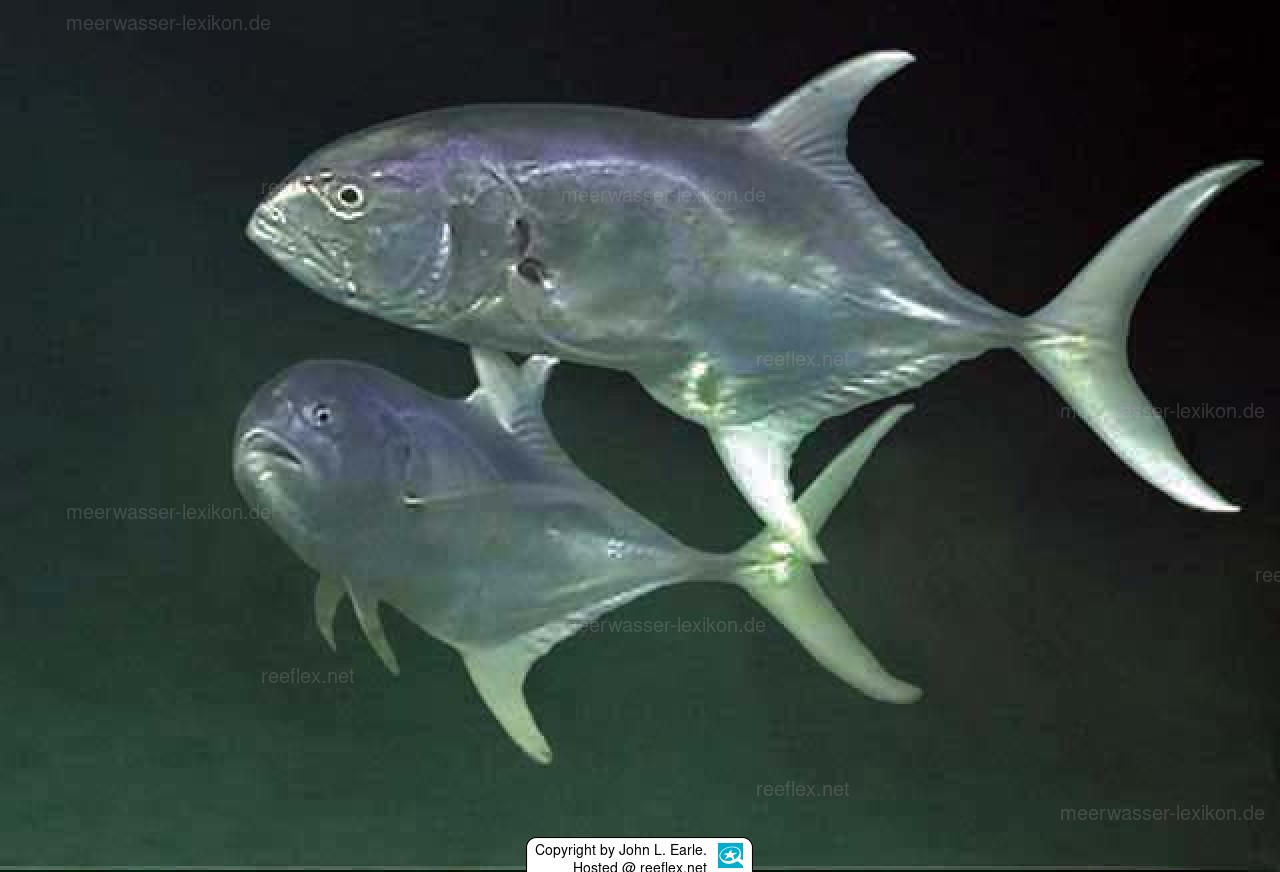Info
This pelagic, oceanodromous species occurs in ocean and coastal waters, often in shallow waters, with larger individuals up to 350 metres deep.
The large spiny mackerel also occurs in brackish water and occasionally even ascend into rivers and has been observed in a rocky reef on the island of Cano, Costa Rica.
Medium to large schools form in the sea, but adult fish can also be observed solitary, while juvenile fish are often found in river mouths.
These large and very fast predators feed mainly on fish, but also take in shrimp and other invertebrates.
Description:
The large fish is greenish blue or bluish black on the back and silver white to yellowish or golden on the underside.
There is a black spot on the gill cover, the lower corner of the pectoral fin also shows a black spot.
The caudal and anal fins are yellowish.
Despite its relative size and speed, Caranx caninus has a predator that is even larger and much faster: The Indo-Pacific blue marlin (Makaira mazara (Jordan & Snyder 1901).
Synonym: Caranx hippos caninus (Günther, 1867)
The large spiny mackerel also occurs in brackish water and occasionally even ascend into rivers and has been observed in a rocky reef on the island of Cano, Costa Rica.
Medium to large schools form in the sea, but adult fish can also be observed solitary, while juvenile fish are often found in river mouths.
These large and very fast predators feed mainly on fish, but also take in shrimp and other invertebrates.
Description:
The large fish is greenish blue or bluish black on the back and silver white to yellowish or golden on the underside.
There is a black spot on the gill cover, the lower corner of the pectoral fin also shows a black spot.
The caudal and anal fins are yellowish.
Despite its relative size and speed, Caranx caninus has a predator that is even larger and much faster: The Indo-Pacific blue marlin (Makaira mazara (Jordan & Snyder 1901).
Synonym: Caranx hippos caninus (Günther, 1867)







 John L. Earle, Hawaii
John L. Earle, Hawaii
















